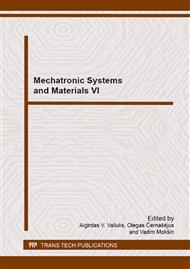p.957
p.963
p.969
p.974
p.981
p.989
p.995
p.1001
p.1008
A Combination of Non-Formal and Formal Education Systems for the Students Studying Mechatronics Engineering and Improving Practical Skills and Synergistic Abilities
Abstract:
The article analyses the possibilities of and demand for a combination of non-formal and formal education systems for the students studying mechatronics engineering and improving practical skills and synergistic abilities. The paper surveys the sector of Lithuanian engineering industry as well as its competitiveness and non-formal education of young specialists relevant to the sector. The publication also reviews the results of profit and demand for non-formal education projects concerning the students studying mechatronics engineering. The piece of writing provides a model and its logical scheme for improving the theoretical knowledge and practical skills of young mechatronics specialists through non-formal education.
Info:
Periodical:
Pages:
981-988
Citation:
Online since:
January 2015
Authors:
Price:
Сopyright:
© 2015 Trans Tech Publications Ltd. All Rights Reserved
Share:
Citation:


